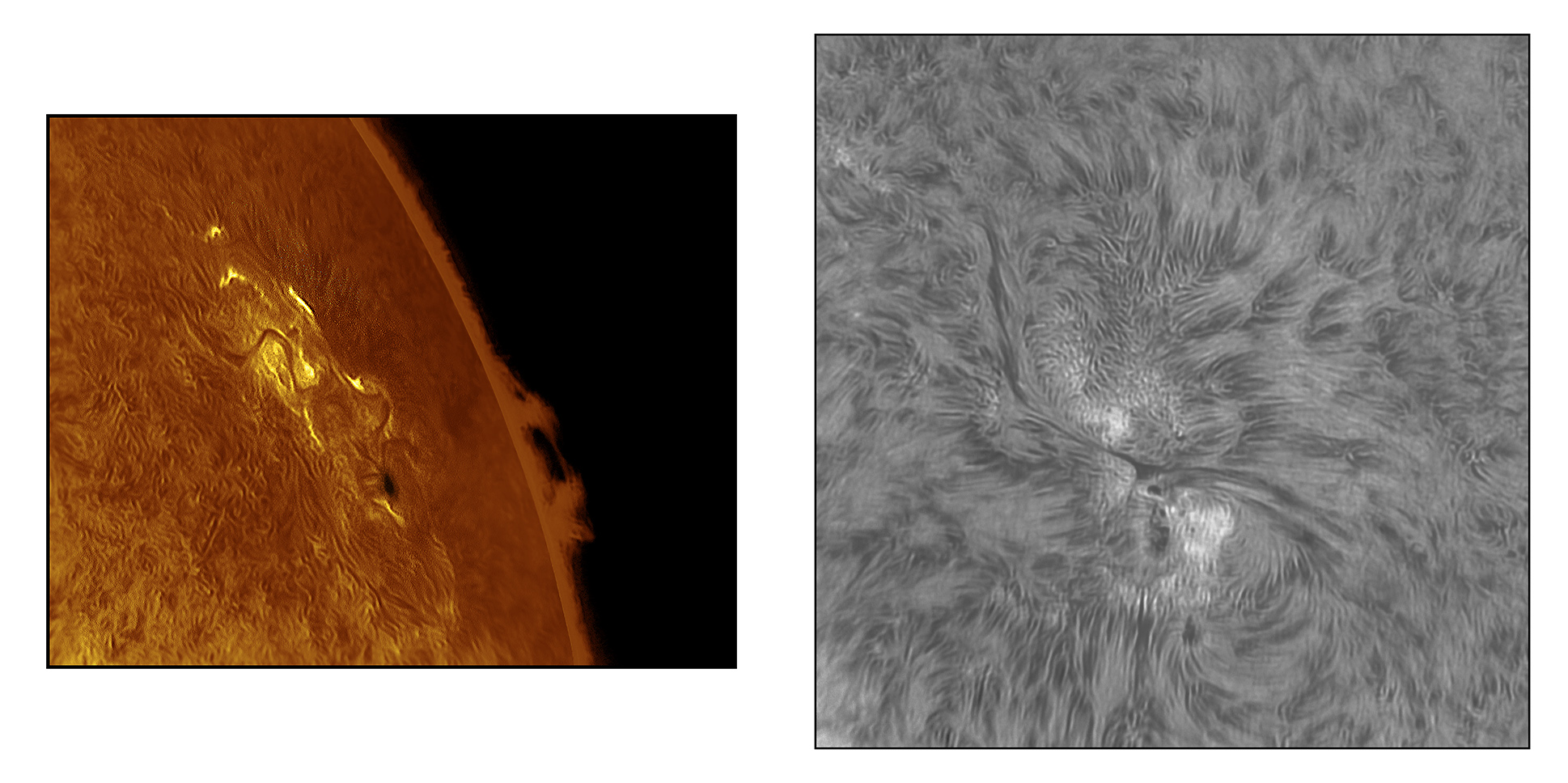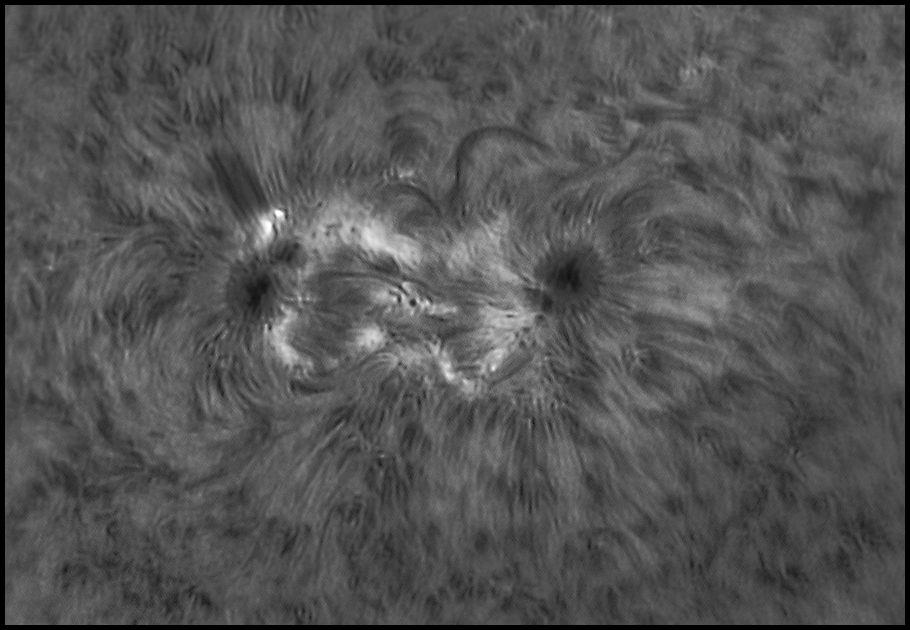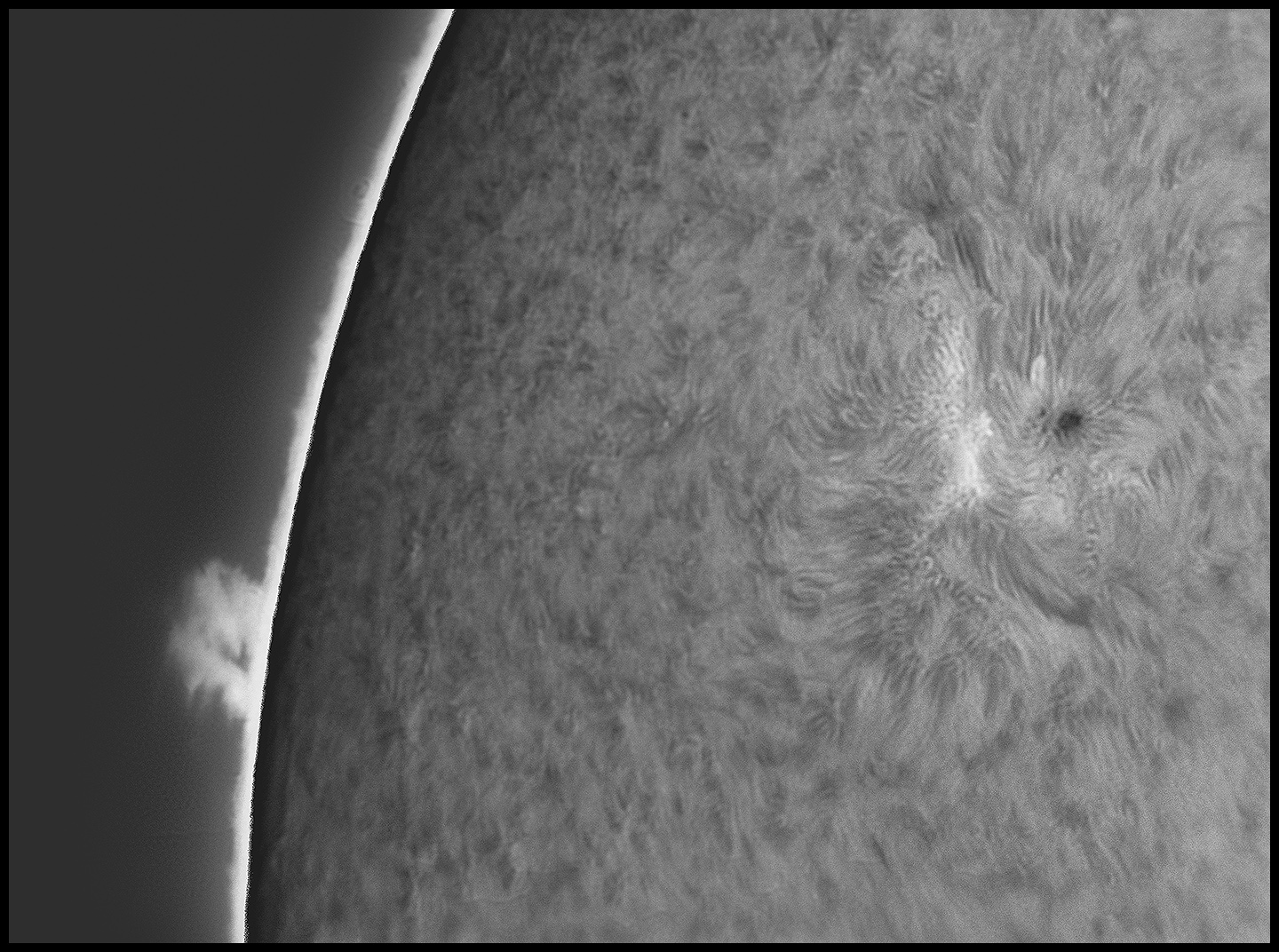Clouds & Timing
11/02/2021. A very active sunspot complex transited the Sun, fired an X-flare, launched a coronal mass ejection, and showed much of the country the first auroras of the new cycle. We had lots of clouds. I finally got a glimpse of the AR on its way off the Sun and enjoyed a good look at a second, less dramatic area yesterday. It's tossed some decent flares, but always at night here. Consider these photos a place holder for whatever comes next.

The usual: best 150 of 3,000 frames,
stacked with AS!3 and processed with IMPPG
In other news, there's a TeleVue 5x Powermate on the way from AstroMart which I intend primarily for lunar photos behind the TMB92SS, but I expect to make a solar filter for that 'scope and do some white-light stuff, too. Also, the image scale behind the AT10RC would be... interesting.
01/08/2022. Another complex group made its way across the Sun behind clouds, or during cold, clear but very windy days. And I just didn't feel like chasing it. This week a smaller bipolar group spun into view and I thought, well, if not now when? And gave myself a refresher course in solar imaging.


Best 300 of 3,000 frames. You can make 'em big. Go ahead and click. Don't expect much.
I remembered to set high speed mode, select AVI rather than SEL, take a full-frame flat with gamma turned off, focus using gamma, turn it off again to capture, set a region of interest (2400x2000), and take data at relatively short exposures (2.4ms) with relatively low gain (around 140). The results (AutoStakkert!3, IMPPG, Photoshop) are nothing much to brag about, but they're not nothin'. Maybe a little noisier than usual? Just you wait.
Venus was at inferior conjunction as I captured these data. I put the Sun behind a dense pine top and using the 14x70 Fujinons looked for Venus four degrees and change to the north. Nothing. I saw nothing! This surprises me since the sky was deep blue overhead and still quite blue beside the sunlit pine. The location was unambiguous, but I repeat: nothing!